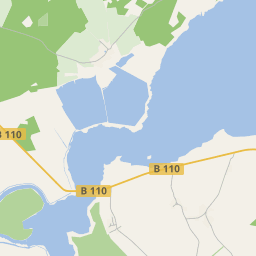












The city Greifswald is situated in the northeast of Germany, between the biggest German islands Rügen and Usedom, in the community of Ostvorpommern. In 1199 already, Cistercian monks founded a monastery near the town - 'Kloster Hilda'. The ruin can still be visited in Eldena.
The Duke Wartislaw III gave the village, at the beginning of the Middle Ages from 1250 onwards, the 'Lübeck town charter', which elevated the settlement to a town. The economic boom happened only, after Greifswald became a member in the 'Hanse' in the Middle Ages.
The three big parish churches - the cathedral Saint Nikolai, Saint Marien and the Jacobi Church - are formidable witnesses of this time.

The tower of St. Nikolai
is the landmark of the Hanseatic town of Greifswald. The St. Nikolai church, whose tower reaches 100m high, is the biggest of the three gothic clinker churches in the historic centre. Built by the inhabitants of Greifswald from 1250 to 1410, the mighty building is dedicated to the Saint Nikolaus, the patron saint of seafarers and traders.
St. Nikolai became early on, the scene of one of Greifswald's most important events: In the year 1456, the memorandum of association documents the foundation of the university was read out in the three-nave basilica.

The Rubenow-tablet of the year 1460, which is situated in the southern side aisle, points indirectly to this memorable event: The founding professors of the university Greifswald are pictured on the tablet.
St. Marien is also one of Greifswald's 3 Gothic town churches. Greifswald's inhabitants call St. Marien, lovingly 'big Mary', due to its stout and massive build.
The start of this big gothic sacral building fell into the middle of the 13th-century. Around 150 years later, the construction of the Marien Church was more or less finished. Nothing on the outside has been changed since then. The most important change came in the 17th-century: the war damaged gothic pointed dome, which once stood high, was replaced by a flat tower tent roof.

The Jakobikirche is the smallest of Greifwald's 3 Gothic churches.
St. Jakobi was built in the second half of the 13th-century, as a two-nave hall church. Around 1400, it was rebuilt into a three-nave church without widening the hall. To realise that, very narrow side-ships had to be built. At the east fassade a chancel was added. In addition, a multilateral chancel was added on the east facade. Despite this, St. Jacobi remained the smallest of Greifswad's three
Gothic churches, which were all construced with clinker as there was shortage of regional quarries.